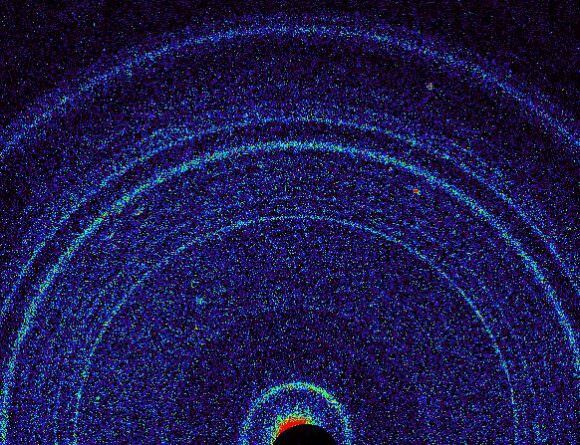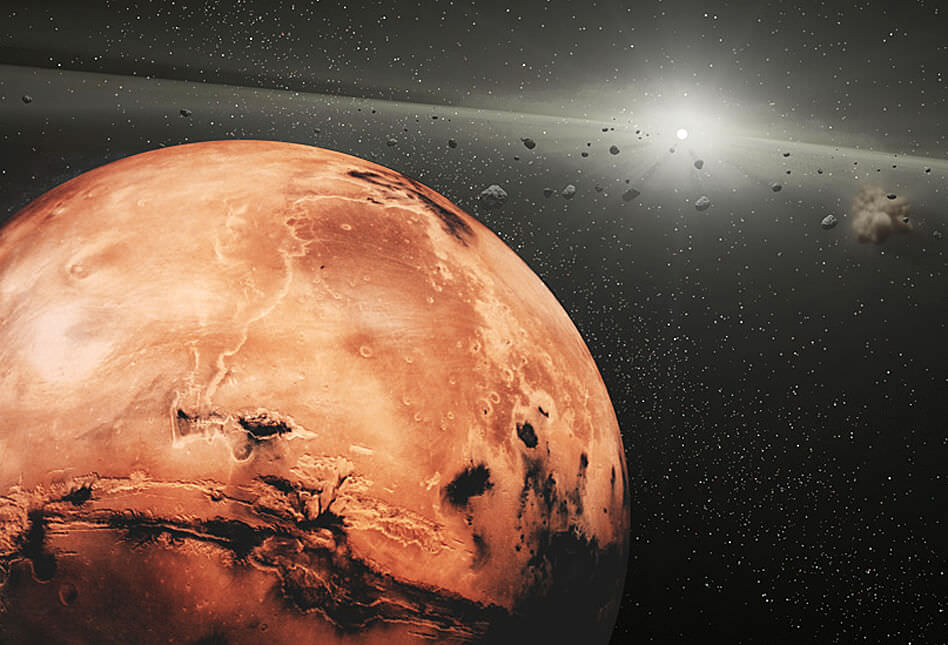Trojan asteroids are a fascinating thing. Whereas the most widely known are those that orbit Jupiter (around its L4 and L5 Lagrange Points), Venus, Earth, Mars, Uranus and Neptune have populations of these asteroids as well. Naturally, these rocky objects are a focal point for a lot of scientific research, since they can tell us much about the formation and early history of the Solar System.
And now, thanks to an international team of astronomers, it has been determined that the Trojan asteroids that orbit Mars are likely the remains of a mini-planet that was destroyed by a collision billions of years ago. Their findings are detailed in a paper that will be published in The Monthly Notices of the Royal Astronomical Society later this month.
For the sake of their study, the team – which was led by Galin Borisov and Apostolos Christou of the Armagh Observatory and Planetarium in Northern Ireland, examined the composition of Marian Trojans. This consisted of using spectral data obtained by the XSHOOTER spectrograph on the Very Large Telescope (VLT) and photometric data from the National Astronomical Observatory‘s two-meter telescope, and the William Herschel Telescope.

Specifically, they examined two members of the Eureka family – a group of Martian Trojans located at the planet’s L5 point. It is here that eight of Mars’ nine known Trojans exist in stable orbits (the other being at L4), and which are named after the first Martian Trojan ever discovered – 5261 Eureka. Like all Trojans, the Eurekas are thought to have orbited Mars ever since the formation of the Solar System.
In fact, astronomers have suspected for some time that the Martian Trojans could be the survivors of an early generation of planetesimals from which the inner Solar System formed. As Dr. Christou told Universe Today via email:
“[The Trojan family] is unique in the Solar System, in more ways than one. Unlike every other family that exists in the Main Asteroid Belt between Mars and Jupiter, it is made up of olivine-rich asteroids. Also, the asteroids are < 2km across, much smaller than we can see at other families, basically because they are much closer to the Earth than other asteroids. Finally, it is the closest family we know to the Sun, and this has implications on how it formed in that the tiny but continuous action of sunlight may have played a role.”
After combining spectrographic and photometric data on these asteroids, the team found that they were rich in the mineral olivine – a magnesium iron silicate that is a primary component of the Earth’s mantle and (it is believed) other terrestrial planets. This was unusual find as far as asteroids go, but it was even more interesting when compared to 5261 Eureka itself – which also has an olivine-rich composition.

Given that the Eureka asteroids also have similar orbits, the team concluded that every member of this family is likely to have a common composition – and hence, a common origin. These findings could have drastic implications for both the origin of Martian Trojans, and the origin of the inner Solar System. As Dr. Christou explained:
“The presence of asteroids with exposed olivine on their surfaces constrains the sequence of events that led to Mars’ formation. Olivine forms within objects that grew large enough to differentiate into a crust, mantle and core. Therefore, these objects must have formed before Mars did and were available to participate in Mars’ formation. To expose the olivine, it is necessary to break these objects up through collisions. Our ongoing work indicates that this is unlikely to have happened after the Solar System settled down in its current configuration, therefore there must have been period of intense collisional evolution during the planet formation process.”
In other words, if Mars formed from several types of material that was mixed together, these asteroids would be samples of the original source – i.e. planetesimals. By examining these asteroids further, scientists will be able to learn more about the process through which Mars came to be and (as Christou says) help us “unscramble the Martian omelette.”
This research is also likely to reveal much about the formation of Earth and the other terrestrial planets of the Solar System. Similar efforts will be made with NASA’s upcoming Lucy mission, which is scheduled to launch in October of 2021. Between 2027 and 2033, this probe will study Jupiter’s Trojan population, obtaining information on six of the asteroid’s geology, surface features, compositions, masses and densities to learn more about their origins.
Further Reading: MNRAS, Armagh Observatory

